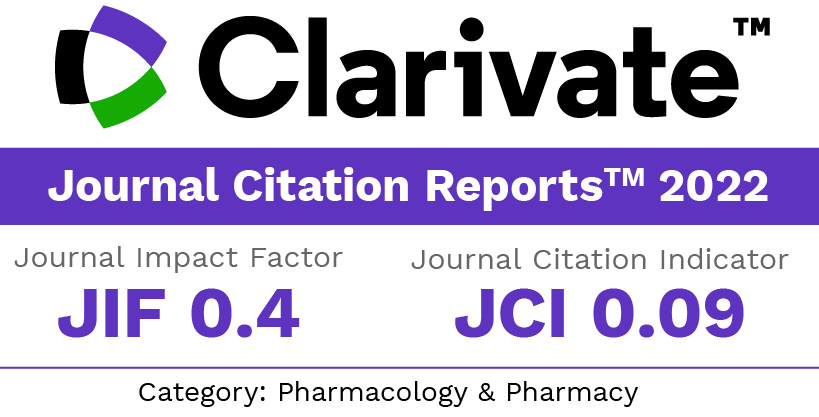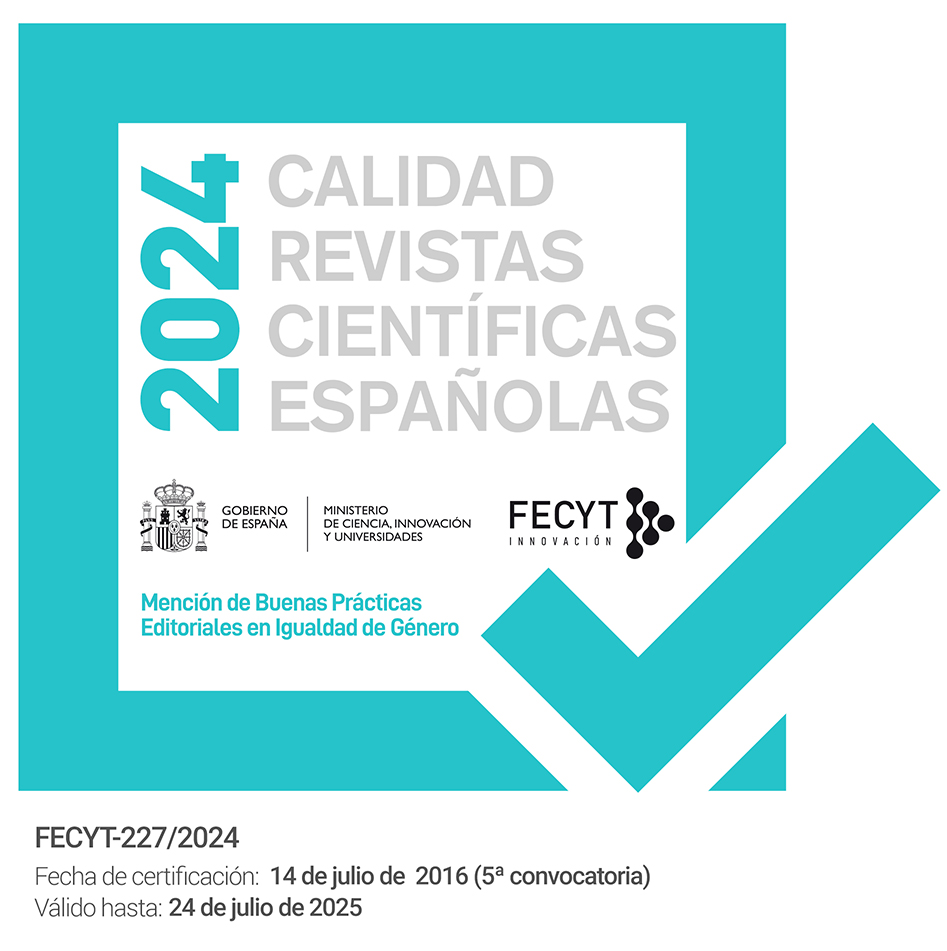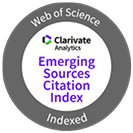A Green Synthesis of Catechol in H₂O₂ by Using a Naturally Prepared Catalyst: WEWSA and WECMA
DOI:
https://doi.org/10.30827/ars.v66i4.34536Keywords:
Dakin oxidation, Hydrogen Peroxide, Green Chemistry, WEWSA, WECMA, CatecholAbstract
Introduction: Green chemistry provides a framework to develop innovative chemical processes and products. These guidelines include all aspects of a process’s life cycle, including the raw materials used, the transformation’s effectiveness and safety, and the toxicity and biodegradability of the products and reagents used.
Methods: By using the Dakin reaction in a manner that was less harmful to the environment was the inspiration for our novel approach to the production of catechol. Aromatic aryl aldehydes can be transformed into phenols at room temperature with the aid of H2O2-WEWSA and WECMA.
Results: The catalytic system should ideally operate without the need for activation or the presence of transition metal catalysts, toxic ligands, additives/promoters, bases, organic solvents, or similar substances.
Conclusion: Assessed the efficacy of this method; various substituted hydroxylated benzaldehydes were examined.
Downloads
References
Bora P, Bora B, Bora U. Recent developments in synthesis of catechols by Dakin oxidation. New J Chem. 2021; 45: 17077–17084. Doi: 10.1039/D1NJ03300J
Su J, Noro J, Fu J, Wang Q, Silva C, Cavaco-Paulo A. Enzymatic polymerization of catechol under high-pressure homogenization for the green coloration of textiles. J Clean Prod. 2018; 202: 792–798. Doi: 10.1016/j.jclepro.2018.08.205
Park J, Kelly MA, Kang JX, Seemakurti SS, Ramirez JL, Hatzell MC, et al. Production of active pharmaceutical ingredients (APIs) from lignin-derived phenol and catechol. Green Chem. 2021; 23: 7488–7498. Doi: 10.1039/D1GC02158C
Fei H, Shin J, Meng YS, Adelhardt M, Sutter J, Meyer K, Cohen SM. Reusable oxidation catalysis using metal-monocatecholato species in a robust metal–organic framework. J Am Chem Soc. 2014; 136: 4965–4973. Doi: 10.1021/ja411627z
AbdulKareem-Alsultan G, Taufiq-Yap YH, Asikin-Mijan N, Seenivasagam S, Lee HV. Hydrodeoxygenation of guaiacol, methylguaiacol, and catechol. Adv Hydrotreating Integr Biofuel Prod. 2024; 193–213. Doi: 10.1016/B978-0-443-19076-6.00014-5
Xu R, Liu W, Deng Y, Gao R, Huang N, Zheng Y, et al. Simultaneously regulating charge separation and proton supply-demand in polyphenol amine for hydrogen peroxide photosynthesis. Chem Eng J. 2024; 486: 150137. Doi: 10.1016/j.cej.2024.150137
Gogoi G, Nath JK, Hoque N, Biswas S, Gour NK, Kalita DJ, et al. Single and multiple site Cu(II) catalysts for benzyl alcohol and catechol oxidation reactions. Appl Catal A Gen. 2022; 644: 118816. Doi: 10.1016/j.apcata.2022.118816
Coupé F, Petitjean L, Anastas PT, Caijo F, Escande V, Darcel C. Sustainable oxidative cleavage of catechols for the synthesis of muconic acid and muconolactones including lignin upgrading. Green Chem. 2020; 22: 6204–6211. Doi: 10.1039/D0GC02157A
Zheng LT, Ryu GM, Kwon BM, Lee WH, Suk K. Anti-inflammatory effects of catechols in lipopolysaccharide-stimulated microglia cells: inhibition of microglial neurotoxicity. Eur J Pharmacol. 2008; 588: 106-13. Doi: 10.1016/j.ejphar.2008.04.035
Bressi V, Ferlazzo A, Iannazzo D, Espro C. Graphene quantum dots by eco-friendly green synthesis for electrochemical sensing: Recent advances and future perspectives. Nanomater. 2021; 11: 1120. Doi: 10.3390/nano11051120
Lee DY, Park M, Kim N, Gu M, Kim HI, Kim BS. Sustainable hydrogen peroxide production based on dopamine through Janus-like mechanism transition from chemical to photocatalytic reactions. J Catal. 2022; 411:235–244. Doi: 10.1016/j.jcat.2022.05.017
Yadav S, Jain A, Malhotra P. A review on the sustainable routes for the synthesis and applications of cuprous oxide nanoparticles and their nanocomposites. Green Chem. 2019; 21: 937–955. Doi: 10.1039/C8GC03303J
Dutta S, Yadav M, Sharma RK. Implementation of Green Chemistry: Real-World Case Studies. Green Chem Beginners. 2021; 205–261. Doi: 10.1201/9781003180425
Su J, Fu J, Wang Q, Silva C, Cavaco-Paulo A. Laccase: a green catalyst for the biosynthesis of poly-phenols. Crit Rev Biotechnol. 2018; 38: 294–307. Doi: 10.1080/07388551.2017.1354353
Surana KR, Bhavar SV, Sonawane VN, Patil DM, Sonawane DD, Mahajan SK. Tap Water and RO Outlet Water a Novel Greener Route to Catechol Synthesis in H2O2. Asian J Green Chem. 2023; 7: 189–198. Doi: 10.22034/ajgc.2023.390693.1389
Tang Z, Zhang M, Xiao H, Liu K, Li X, Du B, et al. A green catechol-containing cellulose nanofibrils-cross-linked adhesive. ACS Biomater Sci Eng. 2022; 8: 1096–1102. Doi: 10.1021/acsbiomaterials.1c01494
Saikia B, Borah P. A new avenue to the Dakin reaction in H2O2–WERSA. RSC Adv. 2015; 5: 105583–105586. Doi: 10.1039/C5RA20133K
Puertas-Bartolomé M, Benito-Garzón L, Fung S, Kohn J, Vázquez-Lasa B, San Román J. Bioadhesive functional hydrogels: Controlled release of catechol species with antioxidant and antiinflammatory behavior. Mater Sci Eng C. 2019; 105: 110040. Doi: 10.1016/j.msec.2019.110040
Al-Hammashi F, Momenbeik F. Polycatechol coated cigarette filter as a sorbent for microextraction by packed sorbent of acidic non-steroidal anti-inflammatory drugs (NSAIDs) from wastewater samples. Microchem J. 2025; 208: 112298. Doi: 10.1016/j.microc.2024.112298
Downloads
Published
How to Cite
Issue
Section
License
Copyright (c) 2025 Khemchand Surana, Sagar Bhawar, Sunil Mahajan, Deepak Sonawane

This work is licensed under a Creative Commons Attribution-NonCommercial-ShareAlike 4.0 International License.
The articles, which are published in this journal, are subject to the following terms in relation to the rights of patrimonial or exploitation:
- The authors will keep their copyright and guarantee to the journal the right of first publication of their work, which will be distributed with a Creative Commons BY-NC-SA 4.0 license that allows third parties to reuse the work whenever its author, quote the original source and do not make commercial use of it.
b. The authors may adopt other non-exclusive licensing agreements for the distribution of the published version of the work (e.g., deposit it in an institutional telematic file or publish it in a monographic volume) provided that the original source of its publication is indicated.
c. Authors are allowed and advised to disseminate their work through the Internet (e.g. in institutional repositories or on their website) before and during the submission process, which can produce interesting exchanges and increase citations of the published work. (See The effect of open access).























